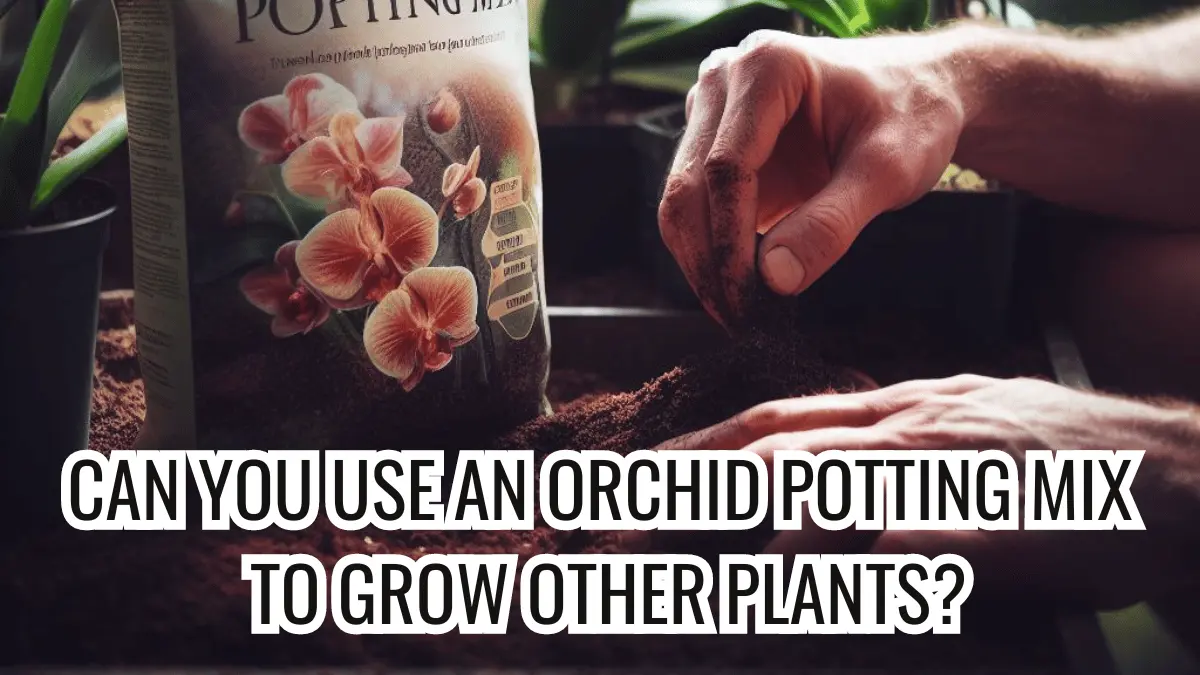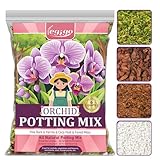We use affiliate links to run our site. When you buy through links on our site, we may earn an affiliate commission, without any added cost to you. Learn more
Howdy folks! Many moons ago, I became curious about using those specialized orchid potting mixes for some of my other houseplants and garden greenery.
While orchid mix works great for those finicky orchids, I wondered if it could also benefit other plants that like airy yet moist soil. So I did some experimentin’ and learned a thing or two!
In this article, I aim to share what I discovered on this journey. We’ll talk about what makes up orchid potting mixes, what types of plants can use them, and the pros and cons you should consider.
I’ll also give tips on making it work for your specific plants. So grab yourself some frybread and settle in!
What is An Orchid Potting Mix?
Orchid mixes are different from regular potting soils. They are light and airy blends designed for the special needs of orchids. Here’s an overview of the common ingredients:
- Bark: Small chunks of fir or redwood bark are the main ingredient. They improve drainage and air spaces.
- Perlite: Those white specks are perlite, a volcanic rock that helps aeration.
- Moss: Different mosses retain moisture while allowing airflow. They also provide a habitat for beneficial microbes.
- Charcoal: Added to some mixes, charcoal absorbs excess moisture and prevents rot.
The goal is to create a mix that drains quickly but still provides air pockets for the orchid’s roots. This is key since many orchids are epiphytes that grow on trees in nature.
Can I Use Orchid Mix for Other Plants?
While orchid mix works great for many plants, it isn’t ideal for every situation. Here are some things to consider before taking the plunge:
- Plant Type: Epiphytes that like airy roots may thrive in the orchid mix, while terrestrial plants like herbs prefer standard potting soil. Assess your plant’s needs.
- Moisture: Orchid mix drains faster than regular soil. It may require more frequent watering for thirsty plants.
- Nutrition: Orchid mixes lack nutrients found in potting soils. You may need to fertilize more with orchid mix.
- Pot Size: Orchid mix works best in containers with good drainage. Avoid oversized pots.
Take the time to understand your plant’s preferences before using an orchid mix. Test it out on less finicky plants first!
Benefits of Using Orchid Mix
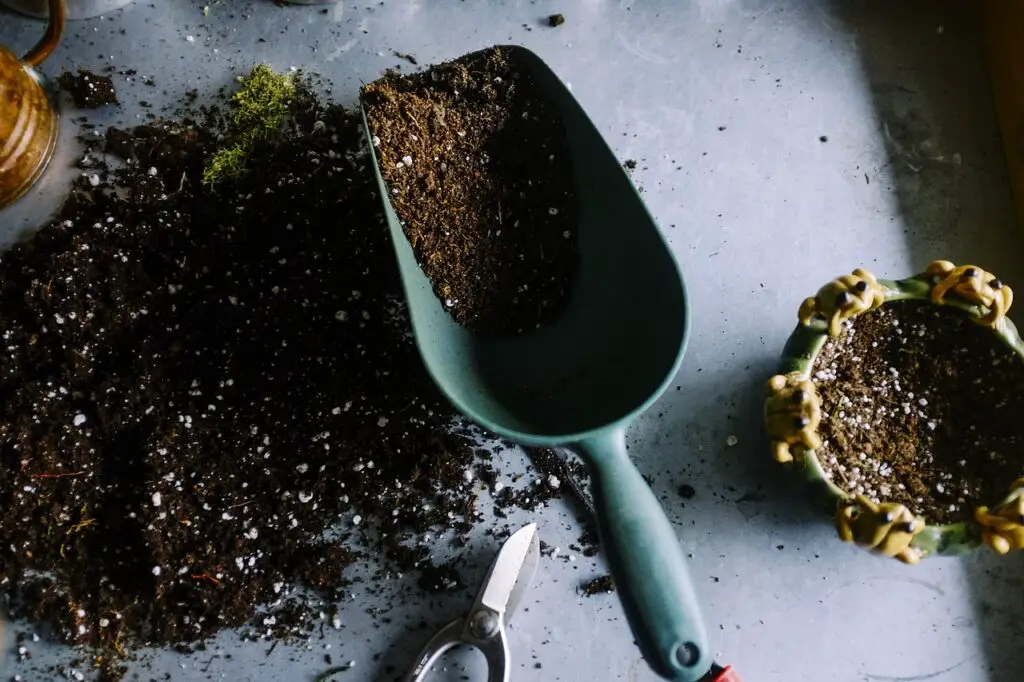

If used for the right plants, orchid potting mix offers a few nice perks:
- Improves drainage & prevents overwatering: The bark and perlite keep soil loose, allowing excess moisture to drain off. This can prevent wet feet and root rot in susceptible plants.
- Encourages healthy roots: Air pockets provide good oxygenation for robust root growth. Some plants really respond well to this.
- Allows for more infrequent watering: The excellent drainage cuts back on needing to water as often. Handy for neglectful plant parents like me!
- May reduce potting mix costs: Orchid bark bags are often cheaper than specialty potting soils. Worth keeping in mind!
If you have the right planting situation, orchid mix can be a cost-effective way to improve drainage and oxygen for healthy roots.
Potential Drawbacks and Challenges
Of course, it’s not all sunshine and rainbows! Here are some potential challenges you may encounter:
- Lack of nutrients: Unlike potting soil, orchid mix lacks fertilizers or nutrients. You’ll have to supplement with more frequent fertilizing.
- Frequent watering: Some plants may need more frequent watering as the mix drains so quickly. It can dry out faster.
- Monitor pH levels: Orchid bark and perlite can alter pH over time. Keep an eye on soil acidity.
- Adjusting recipes: You may have to tweak the standard orchid mix to suit your plant’s needs. Some customization is required!
Be ready to deal with these added cares before committing to an orchid mix for your plants. As with any gardening changes, proceed gradually and observe how your plants respond!
How to Use The Mix For Other Plants
If you want to give the orchid mix a test run, here are a few tips:
- Start by mixing it 50/50 with standard potting soil to create a transition mix.
- For moisture-loving plants, use a mix with more moss or coconut coir to retain water.
- To increase nutrients, blend in a slow-release fertilizer or compost.
- Consider the size of the bark chunks. Larger pieces for vigorous growers, and smaller ones for delicate plants.
- Repot at the right time of year for the plant. Usually, early spring before the growing season.
Follow your plant’s needs and adjust the mix accordingly. Don’t be shy about tweaking recipes to get it right!
- Flexible Combination: This…
- Build To Last: The 5-piece…
- Elevated Comfort: With a seat…
Plant-Specific Guidelines
Now that we’ve got the basics covered, let’s go over how orchid mix can be used for some specific plant types:
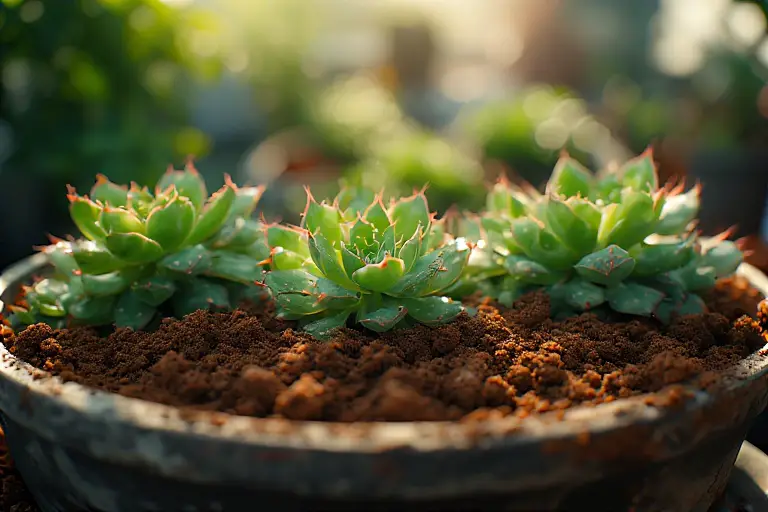

For Succulents and Cacti:
The fast drainage of the orchid mix can work nicely for these desert plants that hate wet roots. Blend it with a bit of cactus potting mix, and add in some granite grit for a mineral boost.
For Tropical Plants:
Bromeliads, anthurium, and other jungle plants tend to like the airier roots and humidity provided by the orchid mix. Increase water retention with shredded tree fern fiber.
For Bonsai Trees:
Bonsai appreciates the humidity and free drainage of orchid mixes. Tweak as needed with components like expanded shale or lava rock for bonsai species preferences.
For Herbaceous Perennials
Hardier perennials may not enjoy a straight orchid mix year-round. Use it as a soil amendment when potting or repotting to encourage better drainage during wet seasons.
Play around with components like charcoal, sand, or leca beads to customize the orchid mix for your particular plants. Listen to what your green friends are telling you!
My Experiences With Orchid Mix
I’ve tried orchid mix on all kinds of plants over the years. Here are some success stories that worked well:
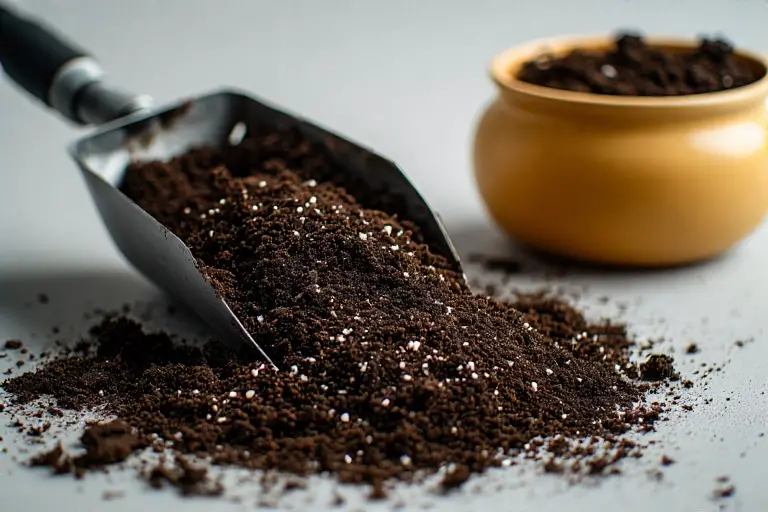

- Using a 60/40 orchid bark & potting soil blend for my prayer plant kept it happy. The mix provided the moisture retention it wanted without getting waterlogged.
- Adding perlite and charcoal to the cactus mix for my balcony succulents improved drainage. They get far less rot and stay healthier.
- My outdoor container gardenias thrived when I used orchid mix amended with peat moss. They loved the humidity retention during hot & dry summers.
Don’t be shy about asking other plant folks online about their experiences too! Orchid forums are full of tips on mixes that work for different plants.
Maintenance and Care
If trying out the orchid mix, be ready to provide a little extra care for your plants:
- Watering needs may increase. Check the soil frequently and water when the top layers feel dry.
- Supplement nutrients with balanced liquid fertilizer or time-released granules.
- Monitor plant health closely and watch for signs of stress related to moisture, nutrients, or pH imbalance.
Be attentive, listen to your plants, and adjust your care routine as needed! Orchid mix may require some extra observation at first.
Final Thoughts:
I hope this blog post has given you a better understanding of whether or not orchid mix is right for your plants. If you decide to give it a try, be sure to monitor your plants closely and adjust your care routine as needed. With a little extra care, orchid mix can help your plants thrive!
If you have found this post helpful, please share it with your fellow plant lovers. You can also explore other articles on this site for more gardening tips and advice. Happy growing!
Frequently Asked Questions (FAQs):
Can I use only orchid bark?
Straight orchid bark may be too quick draining for some plants. Blend it with potting soil or other amendments tailored to the plant.
What about fertilizing?
Since most orchid mixes lack nutrients, you’ll likely need to fertilize more often, especially for heavy feeders.
Is orchid mix safe for veggies?
It’s not ideal for most edibles that need nutrient-rich soil. An exception is tomatoes – some gardeners report great success using orchid mixes for container tomatoes!
Should I add sand too for drainage?
This is usually unnecessary as orchid mixes already provide great drainage. Excess sand can sometimes reduce water retention too much.
Amazon and the Amazon logo are trademarks of Amazon.com, Inc, or its affiliates.


Hi there! My name is Prasenjit and I’m an avid gardener and someone who has grown a passion for growing plants. From my hands-on experience, I have learned what works and what doesn’t. Here I share everything I have learned.
